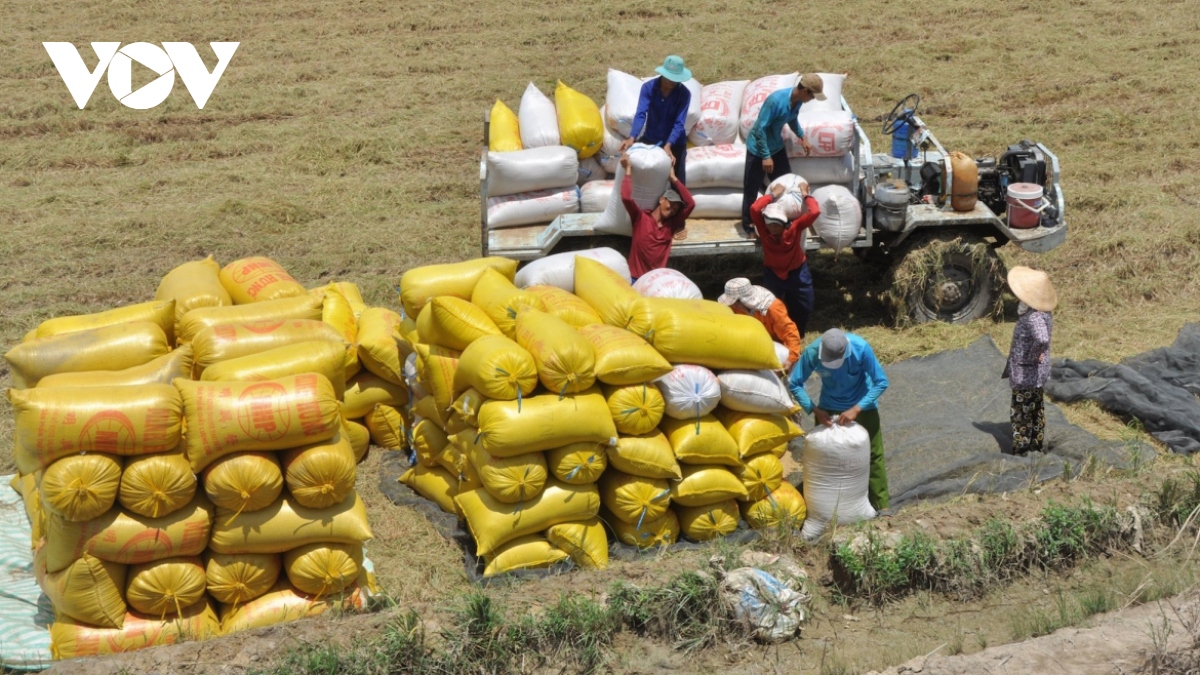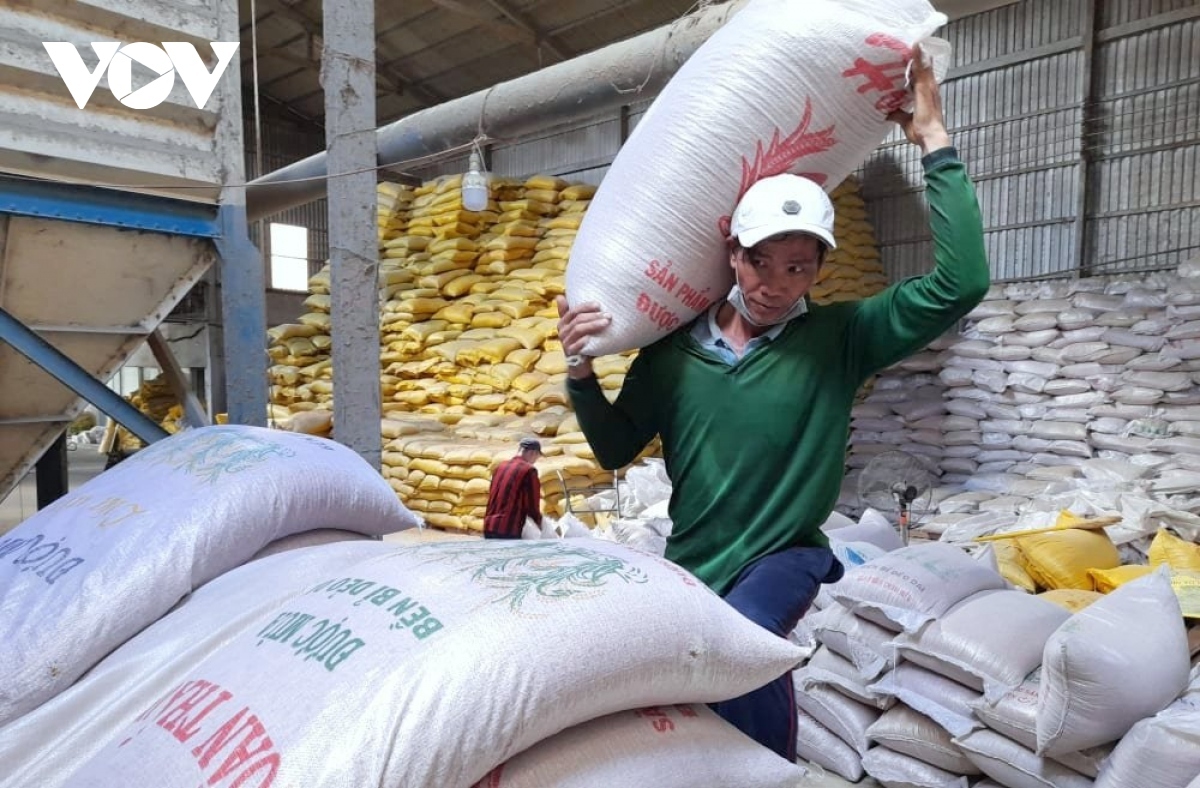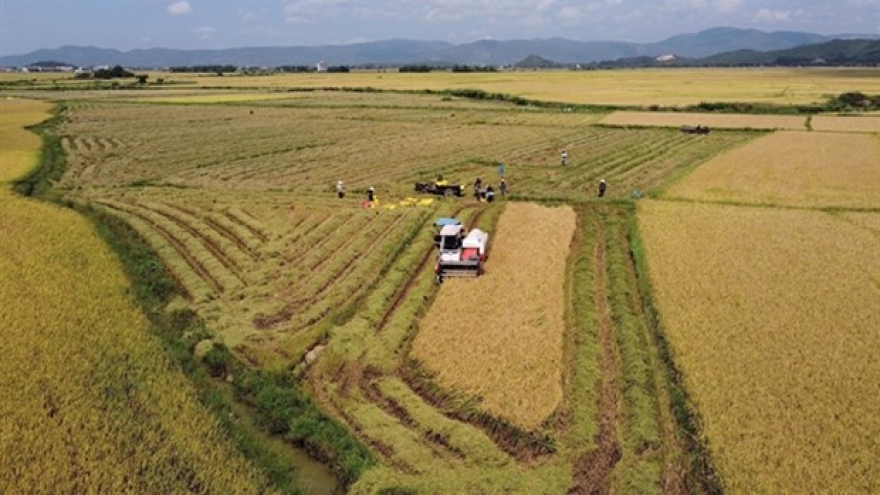Positive signs anticipated for rice exports in 2024
VOV.VN - 2004 is forecast to see rice exports exceed eight million tonnes for the second consecutive year, thereby bringing in about US$5 billion for Vietnam
Amid falling global rice supplies, countries such as the Philippines, Indonesia, China, and several other markets are all moving to increase rice imports in a bid to ensure food security, thereby creating greater opportunities for Vietnamese rice.
After 2023 saw many fluctuations in supply and prices, global rice trade continues to be "hot" from the beginning of the year. Indeed, global inventories for the 2023 to 2024 crop year are forecast at more than 167 million tonnes, down by 8.6 million tonnes compared to the previous crop year and is the lowest inventory level over the past six crop years.
India, the largest exporting country with more than 20 million tonnes of rice per year, has adopted many policies aimed at restricting rice exports since the middle of last year.
Many countries have also shifted to finding alternative sources of rice supply, especially from Southeast Asia, thereby creating opportunities for Vietnamese rice to increase exports, as well as enjoy strong export prices.
In 2023, Vietnamese rice exports fetched more than US$4 billion and are expected to increase even more this year.
Nguyen Anh Son, head of the Import-Export Department under the Ministry of Industry and Trade analysed, "Vietnam's rice industry has recorded remarkable growth through strong transformation in both production and exports. The growth in output, product quality and improved production processes have helped expand the market and enhance the position of Vietnamese rice in the international market.”
Vietnamese rice affirms its quality and is widely known to consumers. Fastidious markets such as Europe, the United States, the Republic of Korea (RoK), and some new markets in the Middle East tend to prefer high-quality Vietnamese rice, he added.
In 2024, the Philippines is likely to import up to 4.1 million tonnes of rice, instead of the previous forecast of 3.9 million tonnes. The reason why the Philippines' rice imports increased sharply is due to the drought affecting domestic rice output.
Last year, China was the country’s third largest rice import partner with 917,255 tonnes valued at more than US$530 million and at an average price of US$578 per tonne.
It is therefore predicted that this year this vast market will increase rice imports to harmonise import and production whilst ensuring food security. Imports may exceed the figure of more than 900,000 tonnes in 2023, with export prices also having the chance to increase further.
Nguyen Ngoc Nam, chairman of the Vietnam Food Association, proposed, "In 2024, the Association also recommends that the Ministry of Industry and Trade strengthen information on import and export data in order to facilitate the balance of rice supply and demand of the parties.”
This is in addition to promoting market research as a means of conducting trade promotion programmes in markets, whilst promptly updating information regarding rice exporters to serve export orientation.
Nam underlined the need to research and negotiate deals to sign preferential trade agreements with a number of potential markets, take advantage of agreements that have been put into effect, and ask partners to increase the Vietnamese rice quota.
Furthermore, traders must raise their awareness about the implementation of free trade regulations in a bid to ensure sustainable production and exports in the nation moving forward, he emphasized.
Nam also advised Vietnamese rice exporters to closely monitor market information to take advantage of opportunities for rice exports in the first months of the year to the Indonesian market when the retail price of rice in the free market for high-quality rice products is up to 18,000 Rupees, equivalent to US$1.16 per kg compared to the ceiling price set by the Government at US$0.9 per kg.
Vietnamese rice is currently present in more than 180 countries and territories, including demanding markets such as Europe, the US, the Republic of Korea (RoK), and Australia.
To deal with market fluctuations in the year ahead, the Ministry of Industry and Trade, as a multi-sectoral economic management agency, has devised strategic, useful, and appropriate solutions for each possible scenario.
The Ministry of Industry and Trade will therefore co-ordinate with the Ministry of Agriculture and Rural Development to actively negotiate to diversify export markets, while also capitalizing on opportunities to dominate new and potential markets to sharpen the overall competitiveness of the rice industry.




